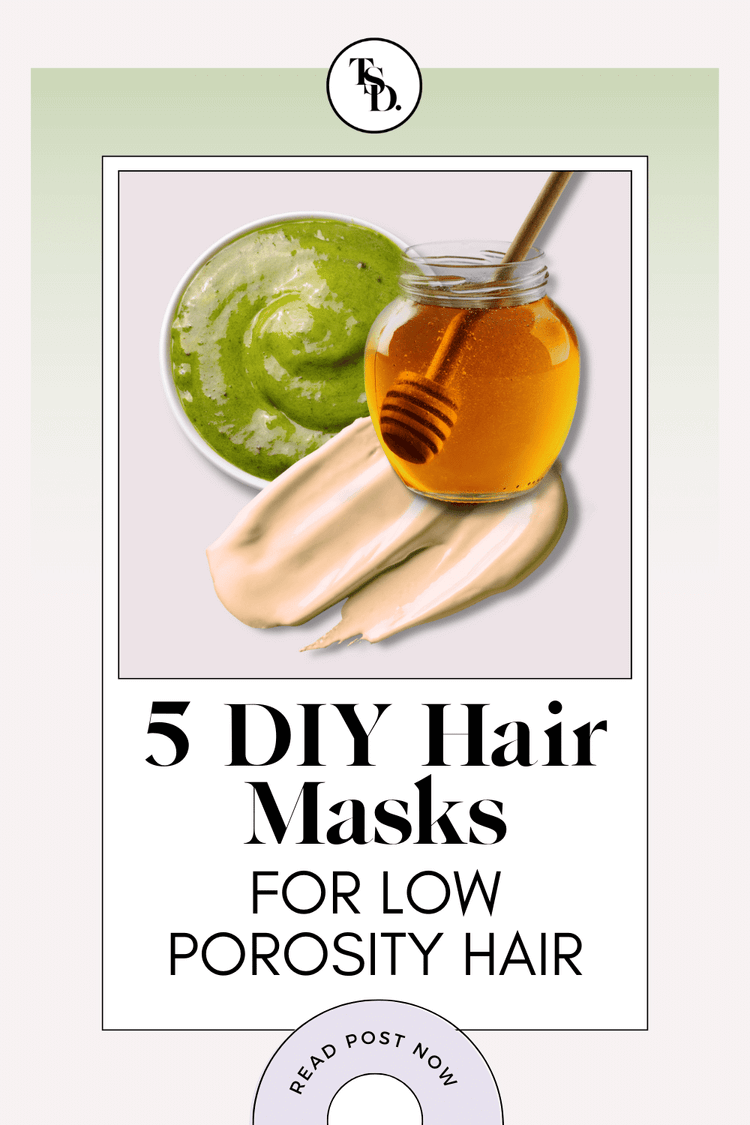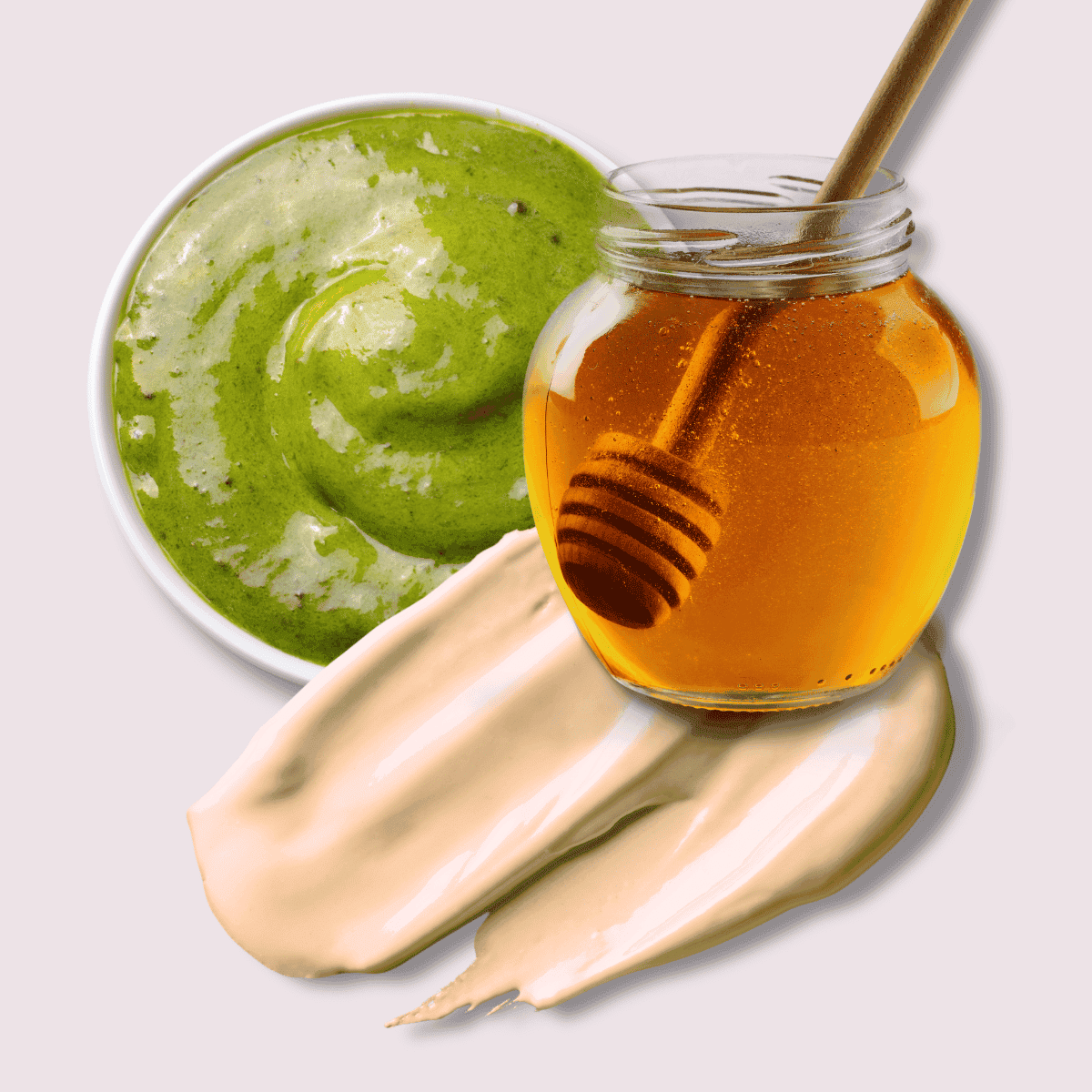Heads up! We may use affiliate links in this post. You'll never pay more, but we might earn a small commission if you buy - thanks for supporting us! See our full disclosure here.
Are you tired of struggling to keep your low porosity hair hydrated and healthy?
You’re not alone! Low porosity hair can be a challenge to manage, but fear not – we’ve got you covered with these 5 DIY hair masks that will give your locks the love they deserve!
Low porosity hair has a unique structure that makes it difficult for moisture to penetrate the hair shaft.
This can lead to dryness and breakage. But with the right ingredients and a little TLC, you can give your hair the deep conditioning it craves.
First, What Is Low Porosity Hair?
Low porosity hair refers to a hair type characterised by a tightly sealed cuticle layer, which inhibits the absorption of moisture and nutrients.
In low porosity hair, the cuticle scales lie flat and tightly packed, making it difficult for water and hair care products to penetrate the hair shaft.
YOU MIGHT LIKE THESE TOO:
- Does Low Porosity Hair Need Protein? Let’s Break It Down!
- Stay Away From Coconut Oil, Shea Butter, Mineral Oil And Olive Oil If You Have Low Porosity Hair, Here’s Why
- Got Low Porosity Hair? These Are The Best Oils To Use!
This is not necessarily a bad thing, your hair just might need some extra care or the right techniques and products designed to help open the cuticle layer and facilitate better moisture absorption.
Medical scientist and hair trichologist Dr Isfahan Chambers-Harris tells Byrdie, “Low porosity [hair] is actually healthy hair that is not being moisturized correctly. The cuticle layer is intact, but you’re not moisturizing it properly, so it becomes dry and tangled.”
That’s where hair masks can potentially work wonders to provide the intense hydration that low porosity hair thirsts for!
How Can DIY Hair Masks Benefit Low Porosity Hair
DIY hair masks can offer several benefits for low porosity hair, helping to improve moisture retention, enhance manageability, and promote overall hair health. Here’s how:
Hydration: Many DIY hair mask recipes contain ingredients like honey, aloe vera, and yoghurt, which are known for their hydrating properties. These ingredients help to infuse moisture into the hair shaft, providing much-needed hydration for low porosity locks that struggle to absorb moisture effectively.
Conditioning: DIY hair masks often contain natural oils such as coconut oil, avocado oil, or argan oil, which help to condition the hair and seal in moisture. For low porosity hair, which tends to be dry and prone to breakage, regular conditioning is essential for keeping the hair soft, smooth, and healthy.
Softening: Ingredients like bananas and eggs are commonly used in DIY hair masks for their softening and smoothing effects. These ingredients help to soften the hair cuticle, making it easier for moisture to penetrate and nourish the hair shaft. For low porosity hair, which can feel rough or coarse, softening agents can help improve texture and manageability.
Nourishment: DIY hair masks often contain ingredients rich in vitamins, minerals, and antioxidants, such as avocado and olive oil. These nutrients nourish the hair and scalp, promoting healthy growth and reducing the risk of damage and breakage. For low porosity hair, which may be prone to dryness and brittleness, nourishing ingredients can help restore vitality and strength.
Try These DIY Hair Masks For Low Porosity Hair
1. Aloe Vera and Almond Oil Mask

Aloe vera is renowned for its hydrating properties, helping to lock moisture into the hair shaft.
It contains vitamins A, C, and E, which nourish the scalp and promote healthy hair growth.
Almond oil, rich in vitamin E and fatty acids, penetrates deeply into the hair shaft to nourish and strengthen from within. It adds shine and softness to low porosity hair, leaving it feeling silky smooth.
Ingredients:
2 tablespoons of aloe vera gel
2 tablespoons of almond oil
Instructions:
In a small bowl, combine the aloe vera gel and almond oil.
Mix well until you achieve a smooth consistency.
Apply the mixture to damp hair, focusing on the ends.
Massage gently to ensure even distribution.
Leave the mask on for 30 minutes to allow the ingredients to penetrate the hair shaft.
Rinse thoroughly with lukewarm water and follow up with your regular shampoo and conditioner routine.
RELATED: How To Make Almond Oil At Home: A Step-By-Step Guide
2. Avocado and Coconut Milk Mask
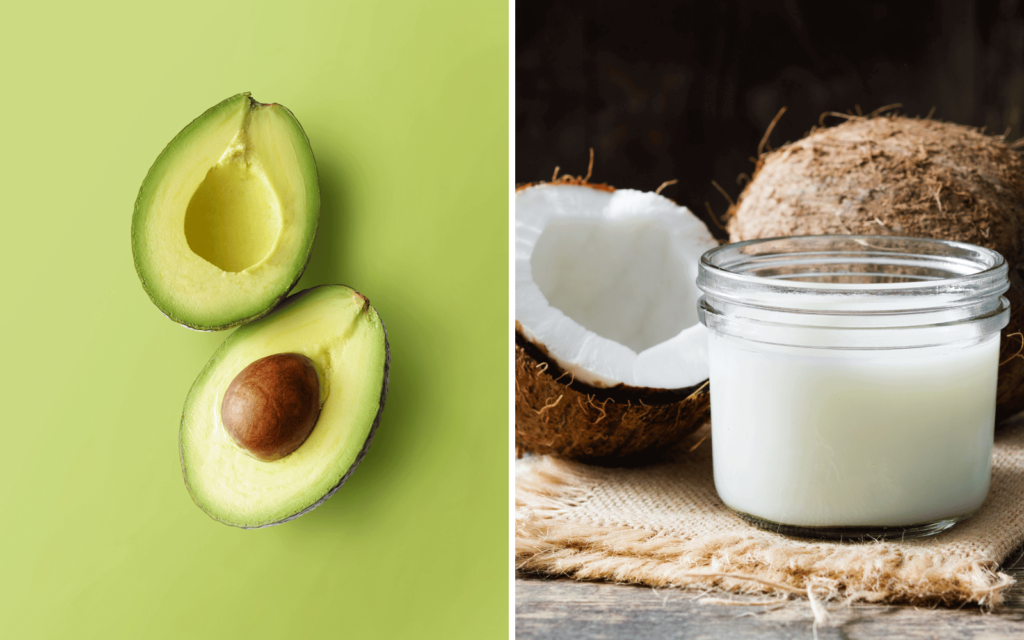
Avocado is packed with vitamins and minerals that promote hair growth and strengthen the hair shaft.
It contains vitamins A, B, D, and E, which nourish the scalp and hair follicles, promoting healthy hair growth.
Coconut milk is rich in fatty acids, which help to moisturise and nourish low porosity hair, leaving it soft, shiny, and manageable.
Ingredients:
1 ripe avocado
½ cup of coconut milk
Instructions:
In a blender, combine the ripe avocado and coconut milk.
Blend until you achieve a smooth, creamy consistency.
Apply the mixture to clean, damp hair, starting from the roots and working your way down to the ends.
Massage gently to ensure all of your hair is coated with the mask.
Leave the mask on for 45 minutes to allow the ingredients to penetrate the hair shaft.
Rinse thoroughly with lukewarm water and follow up with your regular shampoo and conditioner routine.
3. Banana and Yoghurt Mask
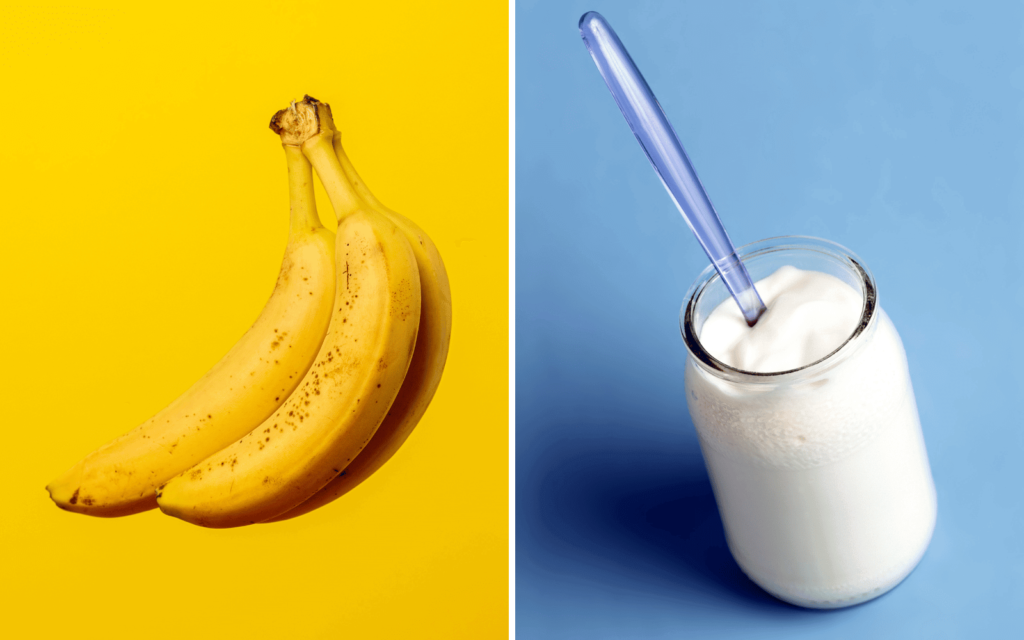
Bananas are rich in potassium, vitamins, and natural oils that soften the hair and improve elasticity, reducing breakage.
Yoghurt contains lactic acid, which helps to cleanse the scalp and remove excess oil and dirt, promoting healthier hair growth and a balanced scalp.
Ingredients:
1 ripe banana
½ cup of plain yoghurt
Instructions:
In a bowl, mash the ripe banana until smooth.
Add the yoghurt to the mashed banana and mix well until combined.
Apply the mixture to clean, damp hair, focusing on the roots and tips.
Leave the mask on for 30 minutes to allow the nutrients to penetrate the hair shaft.
Rinse thoroughly with lukewarm water and follow up with your regular shampoo and conditioner routine.
4. Honey and Apple Cider Vinegar Mask
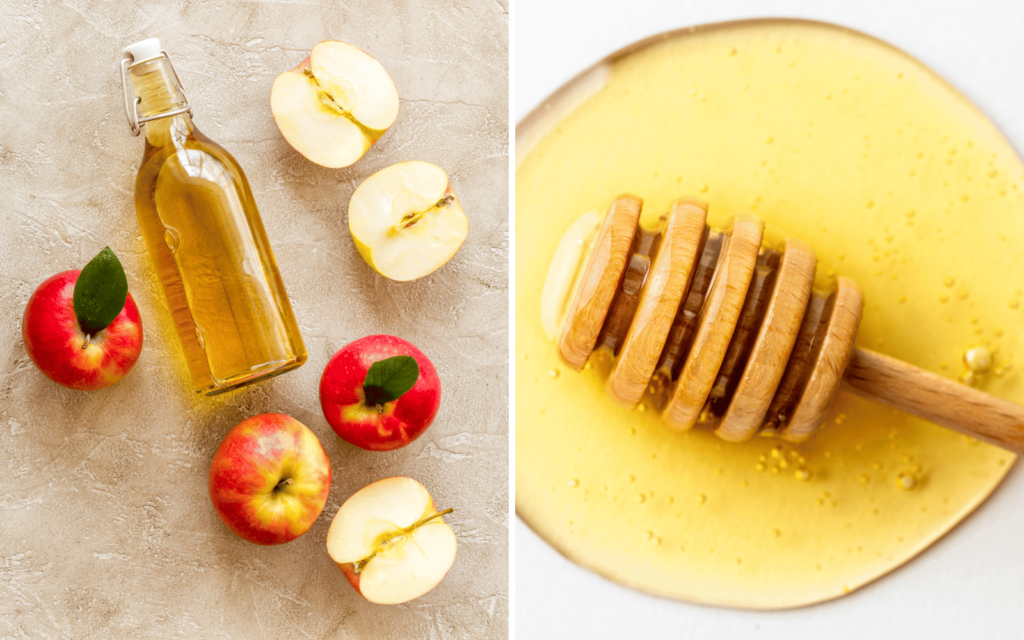
Honey is a natural humectant that attracts moisture to the hair, leaving it soft, shiny, and hydrated.
Apple cider vinegar helps to balance the pH of the scalp, removing buildup and impurities, and leaving your hair feeling clean, fresh and revitalised.
Ingredients:
2 tablespoons of raw honey
1 tablespoon of apple cider vinegar
Instructions:
Mix 2 tablespoons of raw honey with 1 tablespoon of apple cider vinegar in a small bowl until well combined.
After shampooing your hair, gently towel-dry it until damp, but not dripping.
Apply the honey and apple cider vinegar mixture evenly throughout your hair, focusing on the mid-lengths and ends.
Cover your hair with a shower cap or plastic wrap and leave the mask on for 20-30 minutes.
Rinse your hair thoroughly with lukewarm water to remove the mask, then follow with your regular conditioner if needed. Style your hair as usual.
RELATED: How To Do An Apple Cider Vinegar Hair Rinse
5. Mango Butter and Argan Oil Mask

Mango butter is usually an ingredient we’d say to avoid as it is heavy and takes longer to absorb, however, for a hair mask it definitely has a place on this list, plus it has a ton of benefits.
According to Isfahan Chambers-Harris, PhD, a biomedical scientist and trichologist, “Mango butter is excellent because it contains nutrients such as vitamins E and A, which help with moisturization, and it also fortifies the scalp.”
Argan oil is rich in antioxidants and fatty acids that moisturise and nourish the hair, leaving it soft, smooth, and shiny.
Ingredients:
2 tablespoons of mango butter
1 tablespoon of argan oil
Instructions:
In a bowl, melt the mango butter until it becomes liquid.
Add the argan oil to the melted mango butter and mix well.
Apply the mixture to clean, damp hair, focusing on the ends.
Gently massage the mask into your hair and scalp to ensure even distribution.
Leave the mask on for 45 minutes to allow the ingredients to penetrate the hair shaft.
Rinse thoroughly with lukewarm water and follow up with your regular shampoo and conditioner routine.
Tip: Using a steam cap can enhance the effectiveness of the hair mask by creating a warm, humid environment that helps to open the hair cuticle and allows the mask to penetrate more deeply into the hair shaft.
Save on Pinterest for later?
